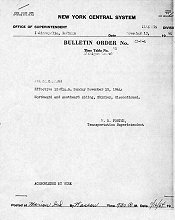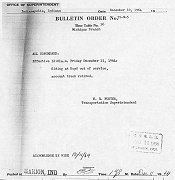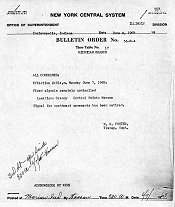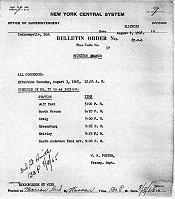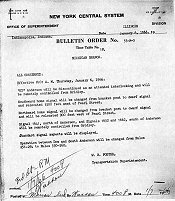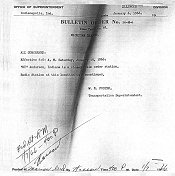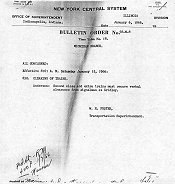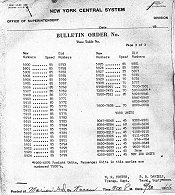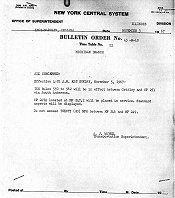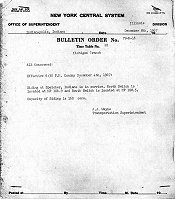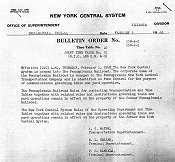|
Page Updated
Time Tables 1895 Passenger 1943 Passenger 1944 Employee Pennsylvania Railroad
|
Per our conversation the other day I will expain their use. Bulletin Orders were on pink paper. They were a bridge between the book of rules and the timetable. The book of rules covered an entire railroad and the timetable brought it down to the local level. Bulletin orders covered almost anything on a local level from speed changes ,signal and schedules to track and station closing. They were in effect for 30 days and if not changed would be reissued until a new timetable came out. It also saved a lot of work on the dispatcher because he did not have to issue trainorders to cover items on the bulletin orders. Checking the bulletin orders was the first thing the crews did when reporting for duty. Lew
Maurice Lewman
|
This page is written, maintained and hosted by: Roger P. Hensley, madisonrails@railfan.net

